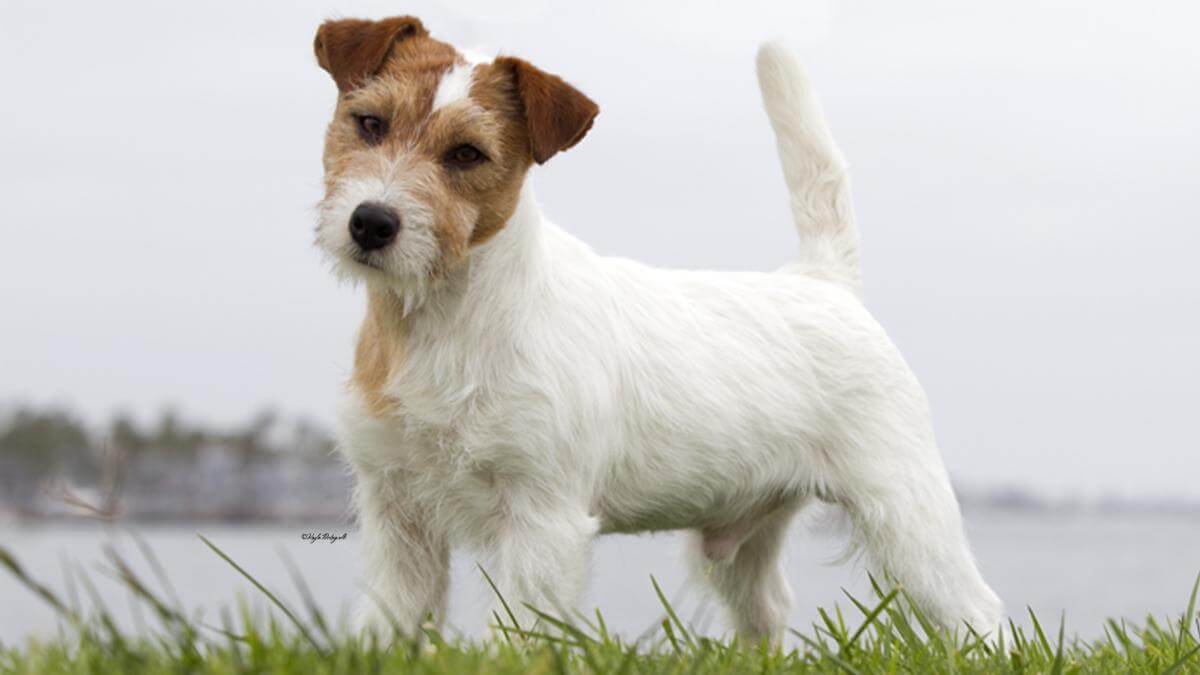


Home » The Russell Terrier: History & Grooming

This article was originally published in Showsight Magazine, March 2014 issue.
The unique characteristics of dogs used to track prey can be traced back to ancient Egypt and countries of Roman influence. The use of canines for fox hunting in its most primitive state has been traced back to 1534 in Norfolk, UK. It wasn’t until the 1800s that fox hunting evolved into an English sport growing well into the nineteenth century. During the 1800s England’s Reverend John Russell’s fox working terriers emerged from which the present Russell Terrier has evolved. Russell Terriers are small, slimly built terriers with the insatiable instincts for prey above and below ground, carried in terrier bags horseback during the Fox Hunt. The most defining characteristics of the breed are their small size, shape and flexibility of the chest, small stature and voice—making the breed the ultimate sportsman. Hounds were imported into the US as early as 1650 to service American hunts. In 1907, the American Master of Fox Hounds Association (MFHA) Hunt was established.
The growing American hunt community not only imported the English Fox Hound but also imported many of the small fox working terriers for hunt service as well as vermin control on the farm. Many of these earthworking terriers, popular as family pets, accompanied English immigrants. The Russell Terrier originated in England from similar ancestry of the Parson Russell, the Fox Terrier and other earthworking English breeds. Shortly thereafter, the Russell Terrier became a distinct type of its own. These small terriers were ideal family companions, working alongside their human counterparts for vermin control and tracking game. They became a very important part of the early hunt history of the US due to their small size, agility and willing temperament perfect for American quarry and terrain. The American Russell Terrier Club, Inc. (ARTC), established in 1995, was the first breed club in the US to organize a comprehensive stud book for the Russell Terrier preserving the original English working lines imported from UK.
The efforts were rewarded in 2004 with AKC recognition. The ARTC, Inc. ushered the breed into the UKC with the Russells from our stud books designated as the only FS stock past or present and AKC in 2004. Used for vermin control and hunt service, flushing fox from dens. It does share similar ancestry with today’s Parson with both breeds going directly back to lines, developed by Rev. John Russell, the hunting Parson, in the mid 1800s. The Rev. Russell’s fox working terrier was the basis for both the Parson Russell Terrier and the Russell Terrier. However, the two distinctly different types emerged in England from the need of the different types based on geographic demands and hunt service demands using dissimilar strains of working terriers.
Grooming the Russell Terrier can be a challenge. The hardest part is to NOT over groom the Russell Terrier no matter how tempting. They come in smooth, broken and rough coats and everything in between. The Russell should only be neatened not sculpted. One trims the face only to neaten it. One pulls the skull and under the neck or may use a clipper if used carefully only lightly under the neck. The body and back are to be pulled to smooth, rubbed with a stone and combed smooth. One brushes down the rough hairs and finishes the back only to smooth. You use the stone or such to pull the sticking out hairs. The head, face and body are NEVER to be stripped and pulled as in the Wire Fox Terrier. The Russell should never even resemble the Wire Fox Terrier in the grooming of the face or legs.
The tail is to be shaped and rounded by a thinning shear. Clip the under body with the brisket area to both neaten and to exaggerate the correct short depth of the chest. A small amount to fringe is fine running along the bottom line of the body. The legs are to be trimmed only to neaten and to show that they are straight and not benched in any way. The legs should be shown to be equal to the depth of the body, this trait is extremely important and needs to be exaggerated as much as possible. The feet are to be neatened. The legs are NEVER to be posted like the Wire Fox Terrier into tight columns. The rear end needs to be thinned too show the best angulation and behind the tail features. Should a judge be presented with an over groomed specimen, they need to go straight to the end of the line for lack of type and incorrect grooming.